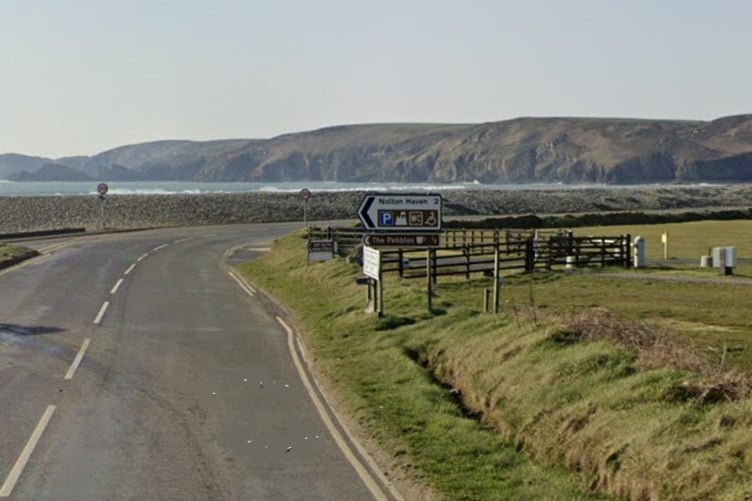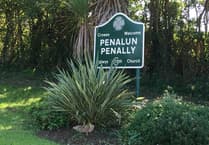Alternative plans to protect Newgale’s coast have been submitted to national park planners, which the applicants say will cost far less than a proposed realignment of the road.
Newgale was hit hard by flooding following storms in early 2014 storms, and later by Storm Dennis in 2020.
In 2014 it even saw a visit by the-then Prime Minister David Cameron, as part of a tour of the UK to “learn lessons” following storms and flooding that year.
The main A487 road was closed for about 14 days after waves breached pebble defences that year, and a Richards Bros bus was stranded in floodwater after it was hit by a high wave, leading to the rescue of around 10 passengers.
In 2018, Pembrokeshire County Council’s Cabinet backed a recommendation, long-term, for an inland highway link for the A487.
An alternative approach, the Newgale Beach Shingle Bank Realignment Scheme (NSBRS) scheme, by Stand Up for Newgale (STUN), proposes a section of the shingle bank at Newgale be realigned 10-12 metres to the seaward leaving an over wash barrier between it and the A487 to capture any pebbles and sea water.
“The proposal would not only protect the road from the over wash of pebbles, but also, and critically, it would protect the road and commercial outlets alongside the road from any landward movement of the shingle bank for 80-100 years,” a supporting statement says.
It adds: “It is presented as a vastly cheaper alternative option than a replacement road.”
The statement says the “costly and destructive” replacement road, supported by the county council, would “effectively split the village of Newgale in half, force the closure of several thriving Newgale businesses and cause considerable environmental damage”.
The applicants dispute the “doomsday” modelling which led to the proposals for a new road inland across nearby Brandy Brook valley, and say their scheme would be considerably cheaper, at an estimated cost of some £150,000 as opposed to the £20m they say the new road would cost, adding that consultation costs alone have cost some £2m.
Based on the last figure STUN says, a £13,000 cost in remedying the 2014 shingle bank failure means that PCC could have used that £2m – based on it being a one-in-25-year event, could protect Newgale for the next 3,846 years.
The supporting statement adds: “It is the considered opinion of our independent expert [Professor of Geography David Keeling] that moving the shingle bank by 10-12 metres seaward will delay any landward movement by 80-100 years with no more maintenance being required than currently carried out by PCC following the occasional storm event.”
It concludes: “The proposal to move the shingle bank seaward ‘buys’ time in which real time monitoring of sea levels over the ensuing decades can inform whether there will indeed be a need for a new road at Newgale in the future or not.”
The application is currently in the process of being validated by national park planners at a later date.





Comments
This article has no comments yet. Be the first to leave a comment.